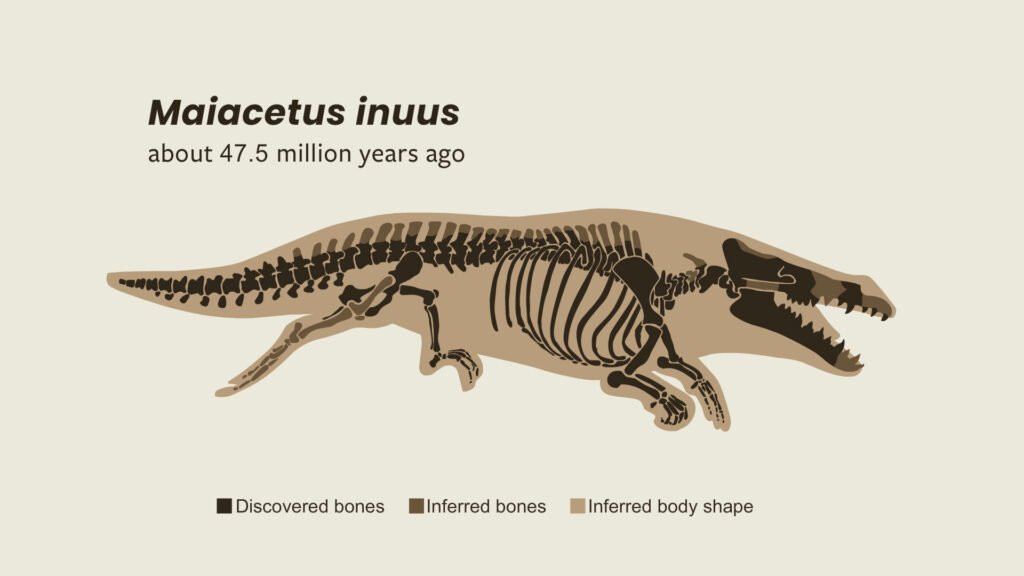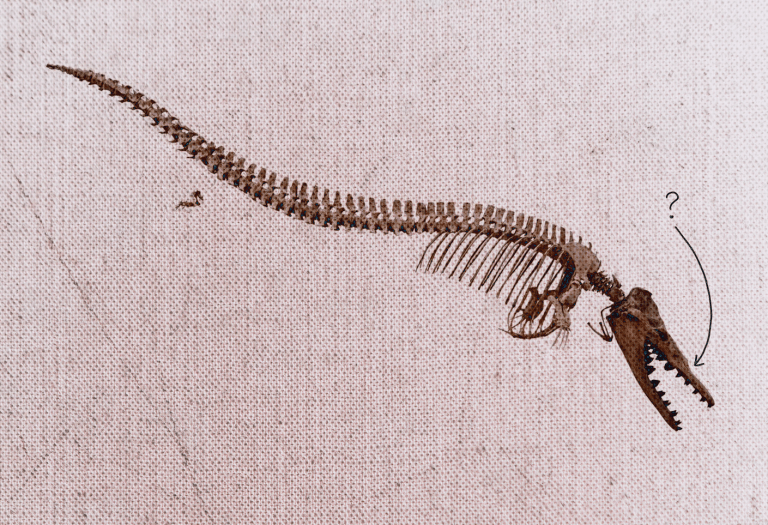Fossils of Maiacetus inuus have been found in extremely good condition. The animals are about 8 1/2 feet long, lived a little over 47 million years ago, and are interpreted as amphibious whales that rested on land but lived and hunted at sea.
What bones were found?
The species is known from three individuals, all of which were found in the Habib Rahi Rock Formation of Pakistan:
- One male skeleton, fully intact, with only minor erosion on the snout and tips of backbone ridges. See illustration above.
- One adult female with well-preserved skull, jaw, left forelimb, upper back, and ribs. See figures 1 and 2 below.
- One partial skeleton, including the skull, of a fetus found within the ribcage of the female. See figure 3 below.
The name Maiacetus means Mother Whale in reference to the pregnant female.
Maiacetus is significant because of how well the skeletons were preserved. Over 90% of the bones from the male were found intact (on one side or the other), which is almost unheard of for a specimen this old!
Drawn above is a model of the male skeleton. The discovered bones are dark brown, and inferred bones are transparent. The shape of the missing fragments in the backbone are inferred by the shape of neighboring bones and from similar structures in animals alive today. The shape of the missing snout tip is inferred from the female skull, which had the snout fully intact. See figure 1 below.
Why is Maiacetus interpreted as a whale?
At first glance, Maiacetus appears wolf-like. Close inspection of the bone shape, however, reveals that this species is an artiodactyl. Its detailed anatomy is much closer to modern whales and modern hippos than to wolves. Paleontologists interpret Maiacetus as an early whale, possibly a direct ancestor of modern whales, for many reasons:
- Their skeletons have all been found among fossils of sea creatures, which suggests they lived in the sea.
- Their hip bones were strong enough to walk on land, but their short legs combined with long flat fingers and toes suggest they would have had difficulty walking.
- The unique structures of their middle ear bones match those of basilosaurid whales and modern whales. See figure 4 below.
- Their finger and toe bones are flattened with ridges along the flanks suggesting that strong connective tissue was attached to form webbed hands and feet. See figure 5 below.
- Their teeth link them to basilosaurid whales—fully aquatic whales found about eight million years later in the fossil record.
- The fore-snout is starting to elongate. An elongated fore-snout is found in all modern whales and all transitional whales after Maiacetus.
- The incisors, or front teeth, are cone-like in shape. This feature is not normal for mammals but is found in modern toothed whales (orcas, dolphins, sperm whales, and so on), and in fossil whales from Pakicetus onward.
- Unique structures of the ankles link Maiacetus to artiodactyls such as hippos, pigs, and deer. This is significant because DNA evidence tells us that modern whales are modified artiodactyls.
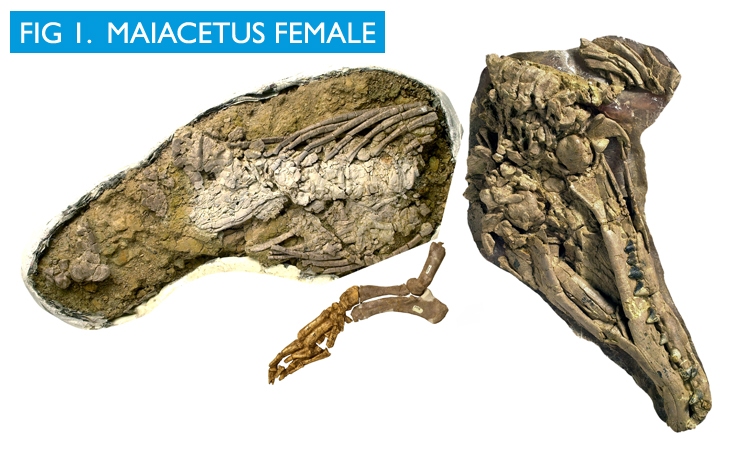
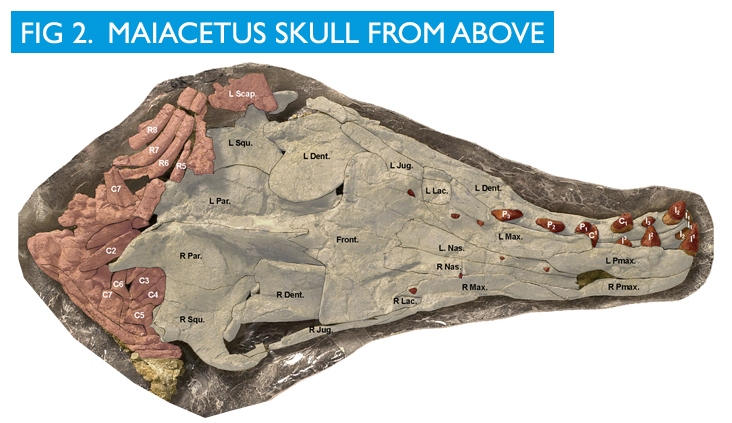
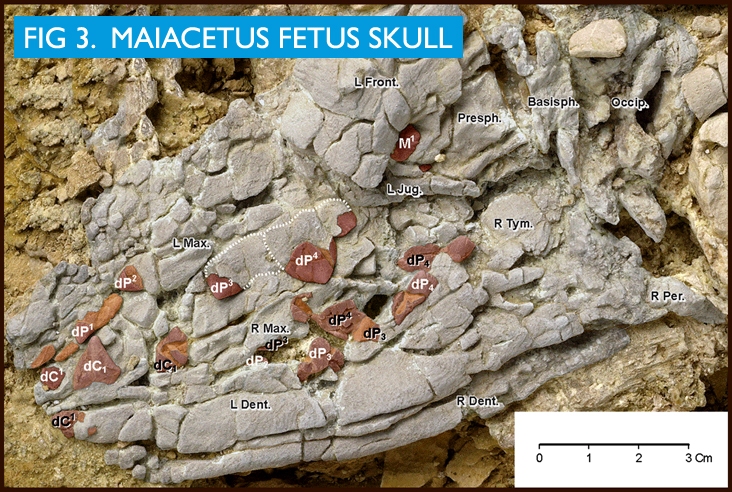
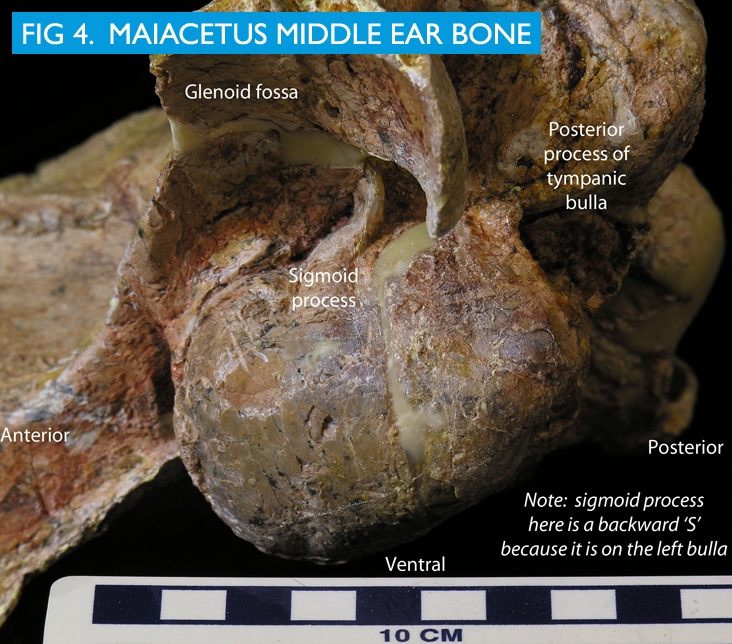
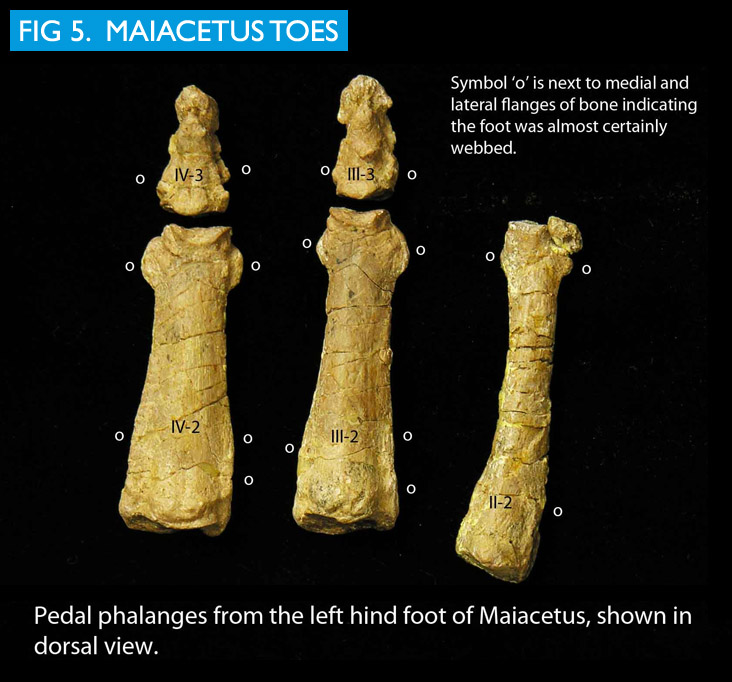
To learn more, read the publication written by the discoverers of Maiacetus: Philip D. Gingerich, Munir ul-Haq, Wighart von Koenigswald, William J. Sanders, B. Holly Smith, and Iyad S. Zalmout.
